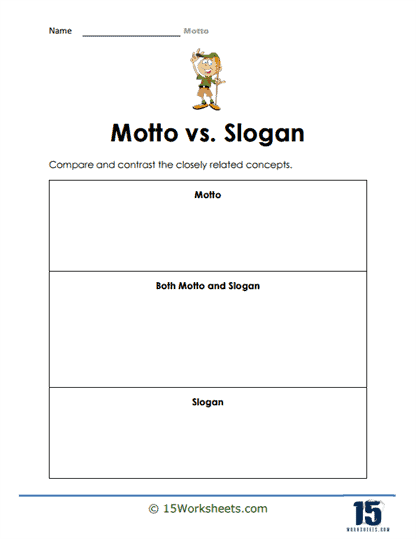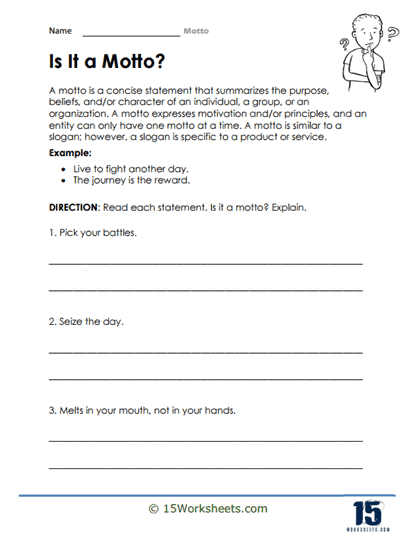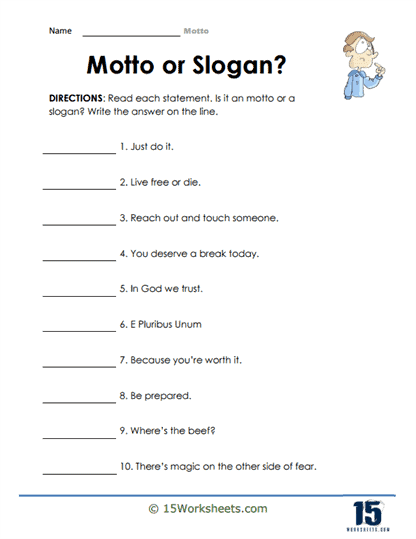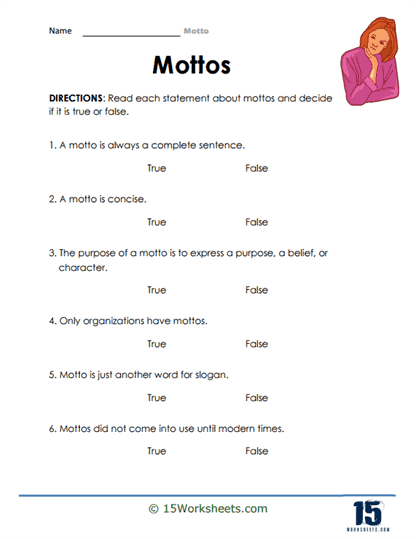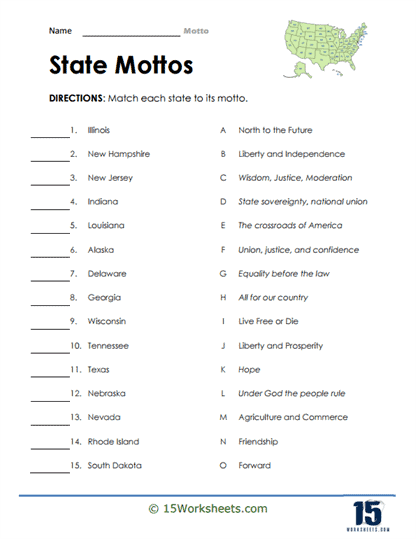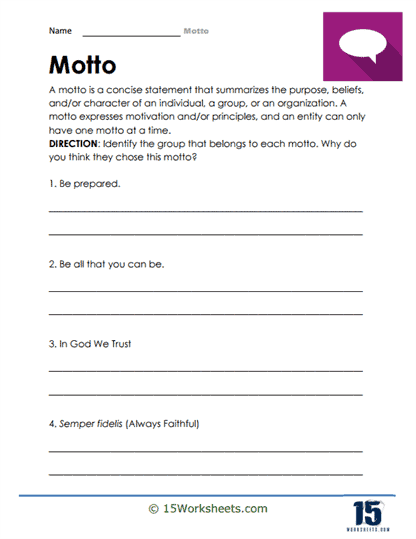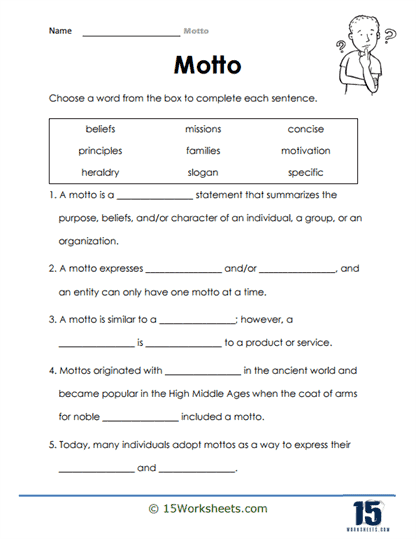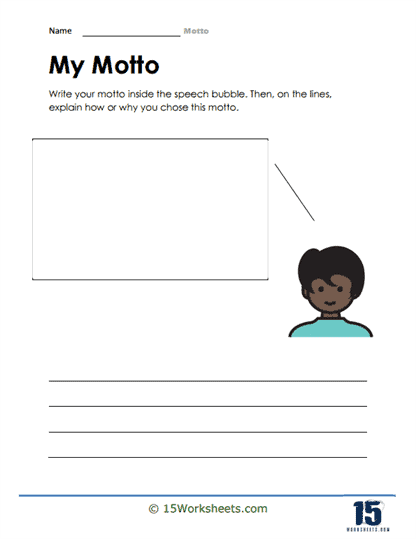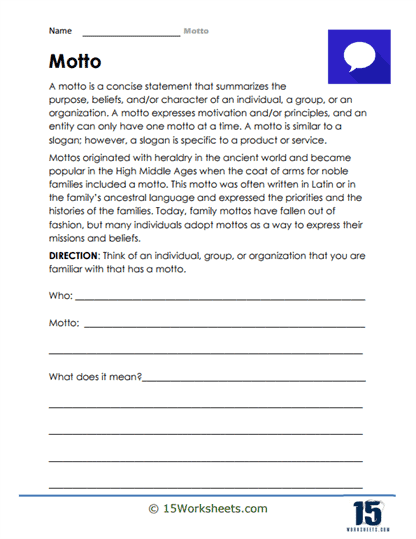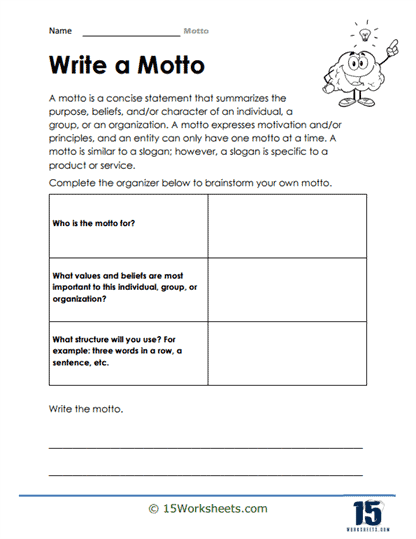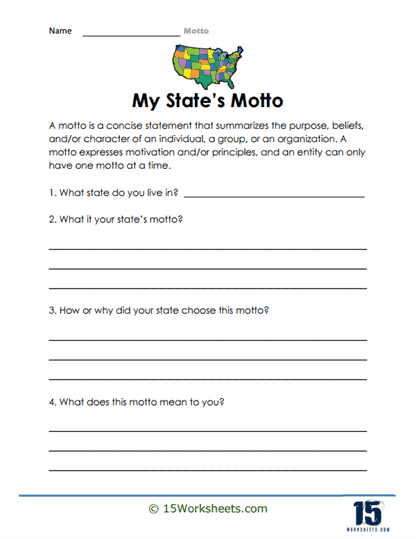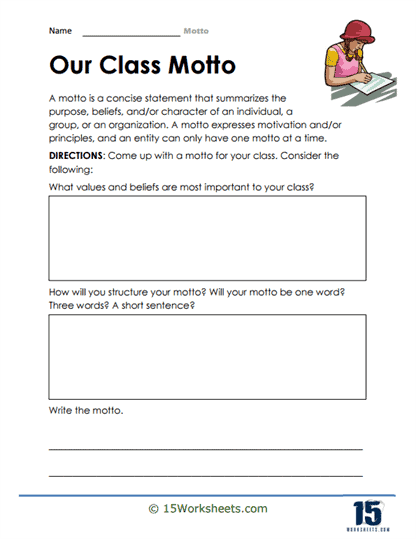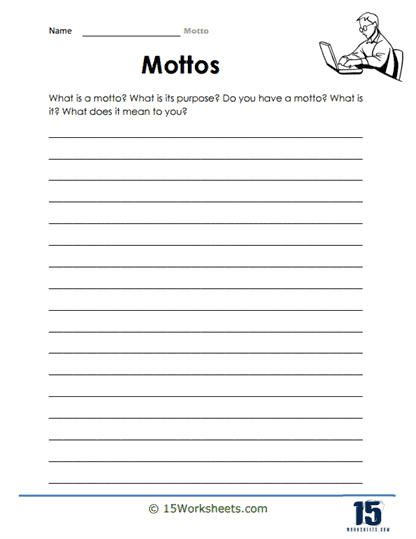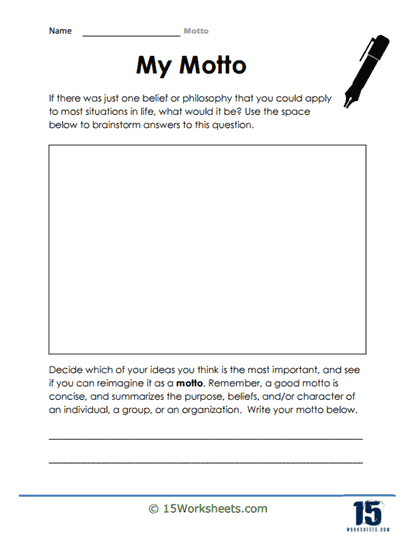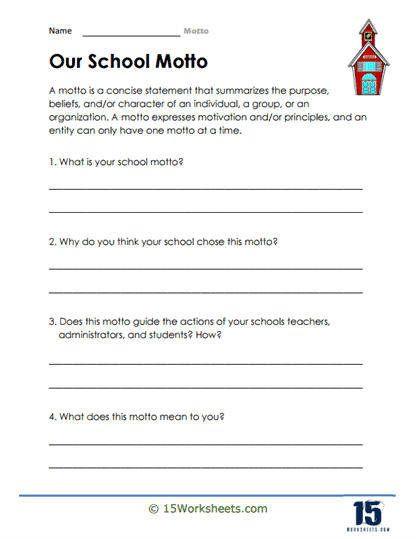Motto Worksheets
All About These 15 Worksheets
This series of 15 worksheets is a creative and engaging resource designed to help students explore and develop their personal values, aspirations, and sense of purpose. These worksheets provide a structured framework for students to understand mottos—powerful statements that encapsulate their guiding principles and serve as a source of inspiration and motivation.
The exercises encourage students to reflect on their beliefs, goals, and character traits, guiding them towards self-discovery and personal growth. Each worksheet is thoughtfully designed to engage students in a step-by-step process that fosters creativity, critical thinking, and effective writing skills. Through these worksheets, students will:
- Compare and contrast motto with slogan and be able to distinguish them from each other;
- Fully grasp the concept of mottos;
- Share their favorite motto and gain a deeper understanding of themselves and what matters most to them.
- Define what different mottos mean and their significance;
- And apply their knowledge on mottos on real-life concepts and scenarios.
This series empowers students to define their values, aspirations, and sense of purpose. With this, students not only develop effective writing skills but also gain a greater sense of self-awareness, motivation, and direction.
These worksheets are suitable for various grade levels and can be incorporated into language arts classes, character education programs, or individual reflection exercises. By using this series, teachers provide their students with a powerful tool for self-expression, self-discovery, and personal development, inspiring them to embrace their unique qualities and pursue their dreams with confidence and determination.
What is a Motto in Literature?
A motto is a short phrase that describes a family’s, organization’s, or individual’s goal or values. On the other hand, a motto isn’t just a quotation you believe in; it’s an official declaration, similar to a logo or mission statement, that describes a person’s or group’s character. The difference between a motto and a slogan is that a person or group can only have one motto at a time, but they can have multiple slogans. Aside from that, mottos and slogans function similarly.
Mottos have their origins in heraldry, which dates back to the ancient world but reached their pinnacle in the High Middle Ages. Noble families were awarded a coat of arms during this historical period, which included numerous symbols like colors, animals, weapons, and so on, to signify the family.
A motto would be written somewhere on the coat of arms, usually in Latin or the family’s ancient tongue. The family’s objectives and history would be expressed in this motto, which was profoundly linked with religion and politics.
Heraldry is no longer as essential as it once was, and most families no longer have mottos (at least not formally). Many people, however, pick mottos for themselves as a method of expressing their values.
Motto: Origins
A motto is a term, phrase, or sentence that expresses a set of values or beliefs. The word motto is derived from the Latin word muttire, which means to murmur or mumble. It first appeared in the English language in 1796 as a motto, which denotes a succinct and pithy proverbial aphorism. It’s the same as the Italian term motto, which means “motivational statement” or “motivational phrase” for a group of people. It can also be used as a slogan. It might be in any language, but in the Western world, such words or sentences are usually written in Latin.
Uses of a Motto
Despite the fact that a motto is a short word or statement that serves as a motivator, it contains deep wisdom that only the masters can comprehend. It is frequently used in speeches or other instances in writing where patriotism is necessary. It’s also used in towns, countries, and states when governments encourage citizens to work more for their benefit. Both Animal Farm and 1984 are excellent examples, as both books depict nations in which mottos are a requirement.
There are just a few occasions when a slogan might be acceptable, even in creative writing. If your narrative is about an organization or a family, a motto might serve as a summary of their values, beliefs, and objectives. However, it is not always necessary to inform the reader of the slogan. This type of stuff frequently comes across as “too much information” — irrelevant knowledge that the reader doesn’t require.
Examples of Motto
On the coinage of the United States, this phrase is engraved in Latin. Its original meaning was “out of many, one,” but it was amended to “in God, we trust,” which was incorporated in the Pledge as well. It appears that the majority of Americans perceive it as a symbol of the country’s multiculturalism. As a result, it has practically become a national slogan, and everyone in the United States is familiar with it. Several other countries, like England, have chosen their mottos, such as “Dieu et mon Droit.” Similarly, an engaging slogan, such as “Liberté, Egalité, Fraternité,” anytime it is uttered, paints a nice picture of the French Revolution.

